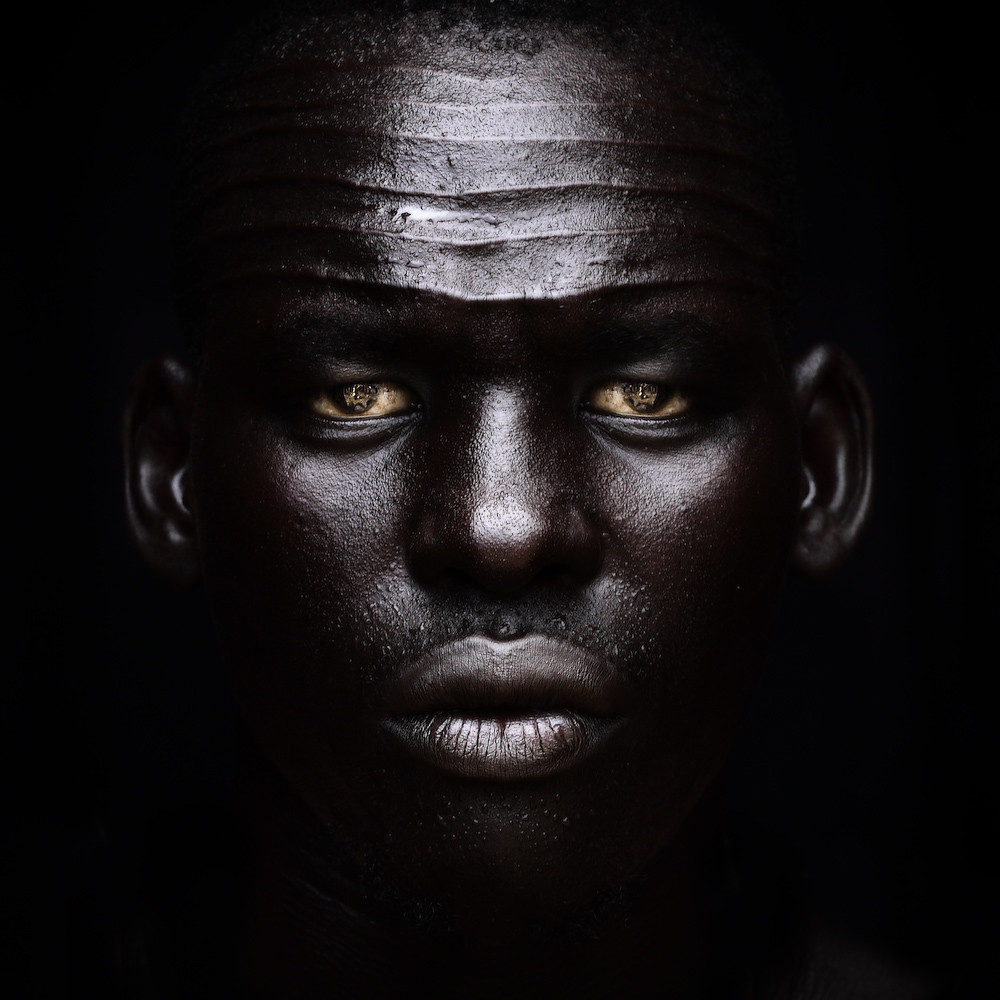The Ultimate Guide To Understanding Darkest Person
Darkest Person
The darkest person in the world is a reminder that we are all equal, regardless of our skin color. We should all be treated with respect and dignity.
- Skin color
- Race
- Culture
- Ethnicity
- Nationality
- Religion
- Gender
- Sexual orientation
- Age
- Disability
These are just a few of the many factors that make up our identity. We should all be proud of who we are, and we should all work to create a more just and equitable world for everyone.
Skin color
Skin color is one of the most visible and easily identifiable characteristics of a person. It is determined by the amount of melanin in the skin, which is a pigment that protects the skin from the sun's harmful UV rays. People with darker skin have more melanin than people with lighter skin.
Skin color is often associated with race, but it is important to remember that skin color is not a reliable indicator of race. There is a great deal of variation in skin color within each racial group, and there are many people who do not fit neatly into any one racial category.
The darkest person in the world is a reminder that skin color is just one of many factors that make up a person's identity. We should all be proud of who we are, and we should all work to create a more just and equitable world for everyone.
Race
Race is a social construct that has been used to categorize people into different groups based on their physical characteristics, such as skin color, hair texture, and facial features. The concept of race has been used to justify discrimination and oppression against people of color for centuries.
The darkest person in the world is a reminder that race is a meaningless construct. There is no scientific basis for the concept of race, and it is harmful to perpetuate the idea that there are different races of humans.
We should all work to create a more just and equitable world for everyone, regardless of their race or any other factor. We should all be proud of who we are, and we should all work to create a more just and equitable world for everyone.
Culture
Culture is a complex and multifaceted concept that encompasses the beliefs, values, norms, and practices of a particular group of people. It is a powerful force that shapes our lives in many ways, from the way we think and behave to the way we interact with others.
Culture is a critical component of darkest person. It is the lens through which we see the world and make sense of our experiences. Our culture influences our values, beliefs, and behaviors, and it shapes our understanding of what it means to be human.
For example, in some cultures, it is considered to be disrespectful to make eye contact with someone who is older or of a higher social status. In other cultures, however, it is considered to be a sign of respect to make eye contact. These different cultural norms can lead to misunderstandings and conflict if people are not aware of them.
It is important to be aware of the cultural factors that influence our understanding of darkest person. This awareness can help us to avoid misunderstandings and to build more effective relationships with people from different cultures.
Ethnicity
Ethnicity is a complex and multifaceted concept that encompasses the shared cultural, linguistic, and historical experiences of a group of people. It is an important aspect of darkest person, as it shapes our identity and our sense of belonging. Ethnicity can be a source of pride and strength, but it can also be a source of discrimination and conflict.
- Culture
Culture is a key component of ethnicity. It encompasses the beliefs, values, norms, and practices of a particular group of people. Culture is passed down from generation to generation, and it shapes our way of life. - Language
Language is another important aspect of ethnicity. It is a way of communicating with others who share our culture. Language can also be a source of pride and identity. - History
History is a third important aspect of ethnicity. It is the shared experiences of a group of people over time. History can shape our identity and our sense of belonging.
Ethnicity is a complex and multifaceted concept that can have a profound impact on our lives. It is important to be aware of our own ethnicity and the ethnicity of others. This awareness can help us to build bridges and to create a more just and equitable world.
Nationality
Nationality and darkest person are closely related, as nationality can play a significant role in determining a person's skin color. People who are born in countries with high levels of sun exposure are more likely to have darker skin tones, as their bodies produce more melanin to protect themselves from the sun's harmful UV rays. Conversely, people who are born in countries with lower levels of sun exposure are more likely to have lighter skin tones, as their bodies do not need to produce as much melanin.
In addition to genetics, nationality can also influence a person's skin color through cultural practices. For example, in some cultures, it is considered to be fashionable to have a tan, so people may spend a lot of time in the sun or use tanning beds to darken their skin. In other cultures, it is considered to be more attractive to have fair skin, so people may avoid the sun and use skin whitening products to lighten their skin.
The relationship between nationality and darkest person is a complex one, and it is important to consider all of the factors that can contribute to a person's skin color. However, it is clear that nationality can play a significant role in determining a person's skin color, and it is important to be aware of this when discussing issues of race and ethnicity.
Religion
Religion is a significant aspect of darkest person, influencing beliefs, practices, and experiences. It encompasses a set of beliefs and practices concerning the cause, nature, and purpose of the universe, often involving devotional and ritual observances, and often containing a moral code governing the conduct of human affairs.
- Sacred Texts and Beliefs
Many religions have sacred texts that provide guidance and teachings on how to live a meaningful life. These texts often contain stories, parables, and moral codes that shape the beliefs and values of adherents.
- Rituals and Practices
Religious rituals and practices vary widely across different faiths. They may include prayer, meditation, pilgrimage, dietary restrictions, and specific forms of worship. These practices help to connect individuals to their faith and to express their devotion.
- Community and Belonging
Religion often provides a sense of community and belonging. It brings people together who share similar beliefs and values, and it can offer support and guidance during difficult times.
- Ethics and Morality
Many religions emphasize ethical conduct and morality. They provide guidelines for how to live a good and just life, and they often encourage compassion, forgiveness, and service to others.
Overall, religion is a multifaceted aspect of darkest person that can influence beliefs, values, and practices. It can provide a sense of purpose, community, and moral guidance, and it can play a significant role in shaping the lives of individuals and communities.
Gender
Gender is a significant aspect of darkest person, influencing experiences, identities, and social dynamics. It encompasses the social and cultural distinctions associated with being male or female, and can have a profound impact on one's sense of self and place in the world.
- Gender Identity
Gender identity refers to an individual's internal sense of being male, female, or non-binary. It is distinct from biological sex and can be influenced by various factors, including personal experiences, cultural norms, and societal expectations.
- Gender Roles
Gender roles are the socially constructed expectations and behaviors associated with being male or female. They vary across cultures and time periods, and can influence individuals' opportunities, choices, and experiences.
- Gender Expression
Gender expression refers to the external manifestation of one's gender identity, through clothing, behavior, and other forms of self-expression. It can provide insights into an individual's gender identity and can challenge or reinforce societal norms.
- Gender Equality
Gender equality refers to the equal rights, responsibilities, and opportunities for individuals of all genders. It is essential for creating a fair and just society, and can positively impact the lives of all.
Gender is a multifaceted and complex aspect of darkest person that intersects with various other factors such as race, ethnicity, and socioeconomic status. Understanding the diverse experiences and challenges faced by individuals of different genders is crucial for fostering inclusivity and equity.
Sexual orientation
Sexual orientation is an important aspect of darkest person, influencing experiences, identities, and social dynamics. It refers to an individual's enduring physical, romantic, and/or emotional attraction to another person. Sexual orientation exists on a spectrum and can include heterosexuality, homosexuality, bisexuality, pansexuality, and asexuality, among others.
Sexual orientation is a fundamental aspect of human diversity and is not a choice. It is influenced by a complex interplay of biological, psychological, and social factors. Understanding and respecting diverse sexual orientations is crucial for creating an inclusive and equitable society.
In the context of darkest person, sexual orientation can intersect with other factors such as race, ethnicity, gender, and socioeconomic status, shaping individuals' experiences and identities. For example, LGBTQ+ individuals of color may face multiple forms of discrimination and marginalization. Addressing these intersectionalities is essential for promoting the well-being and rights of all individuals.
Age
Age is a significant aspect of darkest person, influencing experiences, perceptions, and social dynamics. It encompasses the physical, cognitive, and emotional changes that occur throughout an individual's lifespan.
In the context of darkest person, age can be a critical component in shaping an individual's identity and experiences. For instance, younger individuals may have a different perspective on darkest person than older individuals due to generational differences in cultural norms, social expectations, and life experiences.
Real-life examples illustrate the interplay between age and darkest person. In some cultures, older adults are highly respected and revered for their wisdom and life experience, while in other cultures, younger individuals may be more influential in driving social and cultural change. Understanding the influence of age on darkest person can help us appreciate the diverse perspectives and experiences within different age groups.
Practically, this understanding can guide our interactions with individuals of different ages, enabling us to communicate effectively and build stronger relationships. It also highlights the importance of intergenerational dialogue and exchange, fostering a more inclusive and cohesive society that values the contributions of all age groups.
Disability
Disability is an integral aspect of the human experience and plays a significant role in shaping our understanding of darkest person. It encompasses a wide range of physical, cognitive, and sensory impairments that can affect an individual's ability to participate fully in society.
- Physical Disability
Physical disability refers to impairments that affect an individual's mobility, dexterity, or other physical functions. These can include conditions such as spinal cord injuries, cerebral palsy, and muscular dystrophy.
- Cognitive Disability
Cognitive disability refers to impairments that affect an individual's intellectual functioning, learning ability, or memory. These can include conditions such as Down syndrome, autism spectrum disorder, and dementia.
- Sensory Disability
Sensory disability refers to impairments that affect an individual's ability to see, hear, or communicate. These can include conditions such as blindness, deafness, and speech impediments.
- Mental Illness
Mental illness refers to a wide range of conditions that affect an individual's emotional well-being, thinking, and behavior. These can include conditions such as depression, anxiety disorders, and schizophrenia.
Disability can have a profound impact on an individual's life, affecting their education, employment, social interactions, and overall quality of life. However, it is important to remember that disability does not define an individual. People with disabilities are just as capable and valuable as anyone else, and they deserve to be treated with respect and dignity.
Throughout this exploration of "darkest person," we have delved into its multifaceted nature, examining its connections to various aspects of human identity and experience. Key insights emerged, revealing the profound influence of factors such as race, ethnicity, nationality, religion, gender, sexual orientation, age, and disability on shaping our understanding of darkest person.
Firstly, the article highlights the intricate interplay between darkest person and social constructs like race and ethnicity. It emphasizes the fluidity and subjectivity of racial and ethnic categories, challenging traditional notions of difference. Secondly, the discussion on nationality underscores the role of geography and cultural context in shaping skin color and identity formation. It prompts us to consider the complex relationship between place of origin and personal experiences.
In closing, the article serves as a reminder of the immense diversity and richness that exist within the human family. By embracing our differences and recognizing the beauty in each individual, we can create a more inclusive and equitable world. As we continue to explore the complexities of darkest person, let us strive to promote understanding, empathy, and respect for all.Alexander isak parents
Kathleen turner jay weiss
Monica lewinsky relationship status



ncG1vNJzZmian6i1qbHMmqVnmZ2ogG%2BwyKCgrZmcpLCmrc2sp5qblah7pLvMaJuaqpuawLV5z56prKeeY7W1ucs%3D